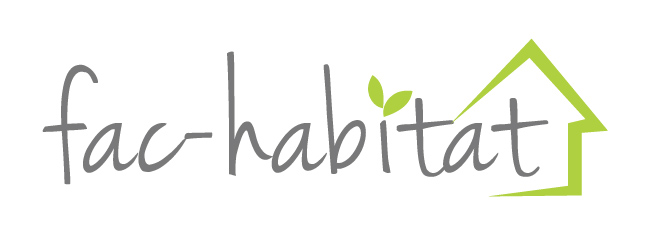Summary
to understand this market
Detailed content
 Inforamtion
Inforamtion
- Number of pages : 30 pages
- Format : Digital and PDF versions
- Last update : 24/04/2024
 Summary and extracts
Summary and extracts
1 Market overview
1.1 Market definition and presentation
Student residences, developed on a massive scale in the 2000s, are large housing complexes specially designed to meet the needs of students and, in some cases, young professionals. These residences are often located close to educational establishments and offer a range of services to facilitate daily life, such as housekeeping, laundry, Internet access and sometimes administrative assistance. They are fully furnished and equipped for the immediate comfort of their residents.
There are two main types of residence: private student residences and public university residences. The latter, managed by the Crous or social landlords under the aegis of the Ministry of Higher Education, are not necessarily considered a market in the strict sense of the term. Nevertheless, they are included in the scope of this study, as they represent 50% of the student housing stock in France, and are essential to understanding the supply/demand dynamic, which is a key driver of the student residence market. Applicants for this type of accommodation are selected on social criteria such as parental income and scholarship status. Despite the high demand, places are very limited and require a Dossier Social Étudiant (DES).
In France, in 2023, there will be around 34,2000 student accommodation units, of which 175,000 will be managed by the Crous. Hostels, which are often run by associations and sometimes have a religious connotation, and which are mainly intended for young working people such as interns or apprentices, are not included in this study, as they are in a very small minority and provide little information.
The market is characterized by very strong, ever-increasing demand, and certain metropolises are particularly under pressure, with increasing international mobility among students. The recent real estate crisis has also had an impact on this market, which is suffering from a flight of investors and rising development costs for real estate projects.
1.2 Ever-increasing global demand
In ****, the global student residences market was valued at US$** billion. With a compound annual growth rate of *.**% forecast from **** to ****, it is projected to reach $**.*** billion by ****. This market is characterized by continuous demand and a steady flow of tenants, even during the summer months, reflecting the stable use of ...
1.3 A booming national market
at the start of the **** academic year, there will be **,**** student residences in France, including ***,*** managed by the Crous. The remainder would be spread across *,*** residences. These residences are either managed by private commercial players (***) between **** and ****, an expansion mainly attributable to key players such as Cardinal Campus, Fac-Habitat and The ...
2 Demand analysis
2.1 Students in France
For the ****-**** academic year, France counted *.** million students enrolled in higher education courses, all courses combined, a number that doubled between **** and ****. This growth was particularly strong in ****, due to French demographics, and in ****, following the previous year's exceptional success rate at the baccalauréat. However, since the start of ...
2.2 Increasing student mobility
According to Unesco, in ****, France will be the *ᵉ most popular country in the world for mobile students, behind the Anglo-Saxon countries that offer training in English. The European Union is the top destination for the *.* million internationally mobile students, and in ****, France welcomed over ***,*** foreign students to its educational institutions, *% more ...
2.3 Student housing preferences
In terms of accommodation, students unsurprisingly prefer to live in a large apartment such as a T*. Some, however, prefer to live in a shared room or apartment. obviously, this survey does not represent the reality of student housing solutions. Half of all students say they prefer furnished accommodation.
What type ...
2.4 Housing difficulties in France
Students report different housing-related problems, depending on the type of accommodation they live in. Students living in CROUS rooms, for example, are more likely to have major housing problems than those living with their parents or in the property of family or friends. The problems encountered vary: students in rented accommodation, ...
3 Market structure
3.1 Value chain
3.2 The different types of player
A student residence project is developed under the management of a property developer, who first purchases the land and then oversees the development of the project through to the start of operations. During the construction phase, design offices or construction companies are commissioned by the developer to get the building off ...
3.3 Market features and recent regulations
The real estate sector has been very much in flux in recent years, and although the student residence market remains fairly stable, the dynamics are changing and investors are becoming increasingly scarce.
The Climate and Resilience Act, enacted in France on August **, ****, represents an ambitious effort to achieve carbon neutrality by ...
4 Offer analysis
4.1 Precise description of the offer
Student residences often group together several types of accommodation in the same building, and offer a range of services, either included in the rent or extra.
The types of apartments offered are often :
Rooms, with shared kitchen and sometimes shared bathroom Studio apartments, with private kitchen and bathroom, between * m² and ...
4.2 Some examples of rents
4.3 The latest innovations in the sector
A number of trends are emerging around the development of student residences.
Office-to-residential renovation
To meet government targets for the creation of student accommodation, the renovation of offices into residences is a widely adopted solution in France, as it is a simple and cost-effective way of rapidly obtaining more housing. This ...
5 Regulations
5.1 The 2004 LMNP law
France's LMNP (***) and furnishings, which can result in a clear reduction in taxable income.
This status also allows, under certain conditions, exemption from capital gains tax on the resale of the property if annual revenues do not exceed certain thresholds (***). As far as social security contributions are concerned, LMNPs are exempt ...
5.2 Climate and Resilience Act
The Climate and Resilience Act, enacted on August **, ****, is a major legislative effort by France to combat climate disruption and strengthen resilience to its effects. It manifests itself through various measures applied to diverse sectors such as transport, advertising, energy, and housing in particular. The main objective is to achieve carbon ...
6 Positioning the players
6.1 Player segmentation
M-habitat ; Studyrama ; Pappers
- Les Crous
- Nexity
- Résidence Etude Les Estudiantines
- Immojeune
- Studélites
- Arpej
- Campusea (Gecina)
- Fac-Habitat
- Espacil
- Suitétudes
- Capétudes
- Kley groupe
- Cap'Études
- CIUP Cité internationale universitaire de Paris
- Fac Habitat
- NEMEA Appart'Etud (Nemea groupe)
- Cardinal Groupe
- Youfirst
 List of charts
List of charts
- Student numbers in France
- Breakdown of French students by type of establishment
- Cities with the highest student housing demand
- Average studio rents in France's most expensive cities
- Average monthly rent by housing type
All our studies are available online in PDF format
Take a look at an example of our research on another market!
Latest news
Companies quoted in this study
This study contains a complete overview of the companies in the market, with the latest figures and news for each company. :
 Choosing this study means :
Choosing this study means :
Access to more than 35 hours of work
Our studies are the result of over 35 hours of research and analysis. Using our studies allows you to devote more time and added value to your projects.
Benefit from 6 years' experience and over 1,500 industry reports already produced
Our expertise enables us to produce comprehensive studies in all sectors, including niche and emerging markets.
Our know-how and methodology enable us to produce reports that offer unique value for money.
Access to several thousand articles and paid-for data
Businesscoot has access to all the paid economic press as well as exclusive databases to carry out its market research (over 30,000 articles and private sources).
To enhance our research, our analysts also use web indicators (semrush, trends, etc.) to identify market trends and company strategies. (Consult our paying sources)
Guaranteed support after your purchase
A team dedicated to after-sales service, to guarantee you a high level of satisfaction. +44 238 097 0676
A digital format designed for our users
Not only do you have access to a PDF, but also to a digital version designed for our customers. This version gives you access to sources, data in Excel format and graphics. The content of the study can therefore be easily retrieved and adapted for your specific needs.
 Our offers :
Our offers :
the student residence market | France
- What are the figures on the size and growth of the market?
- What is driving the growth of the market and its evolution?
- What is the positioning of companies in the value chain?
- Data from several dozen databases
Pack 5 études (-15%) France
- 5 études au prix de 75,6€HT par étude à choisir parmi nos 800 titres sur le catalogue France pendant 12 mois
- Conservez -15% sur les études supplémentaires achetées
- Choisissez le remboursement des crédits non consommés au terme des 12 mois (durée du pack)
Consultez les conditions du pack et de remboursement des crédits non consommés.





 Real estate: Nexity's property managers become independent - 04/04/2024
Real estate: Nexity's property managers become independent - 04/04/2024
 Nemea welcomes a new shareholder to boost growth - 09/02/2023
Nemea welcomes a new shareholder to boost growth - 09/02/2023























